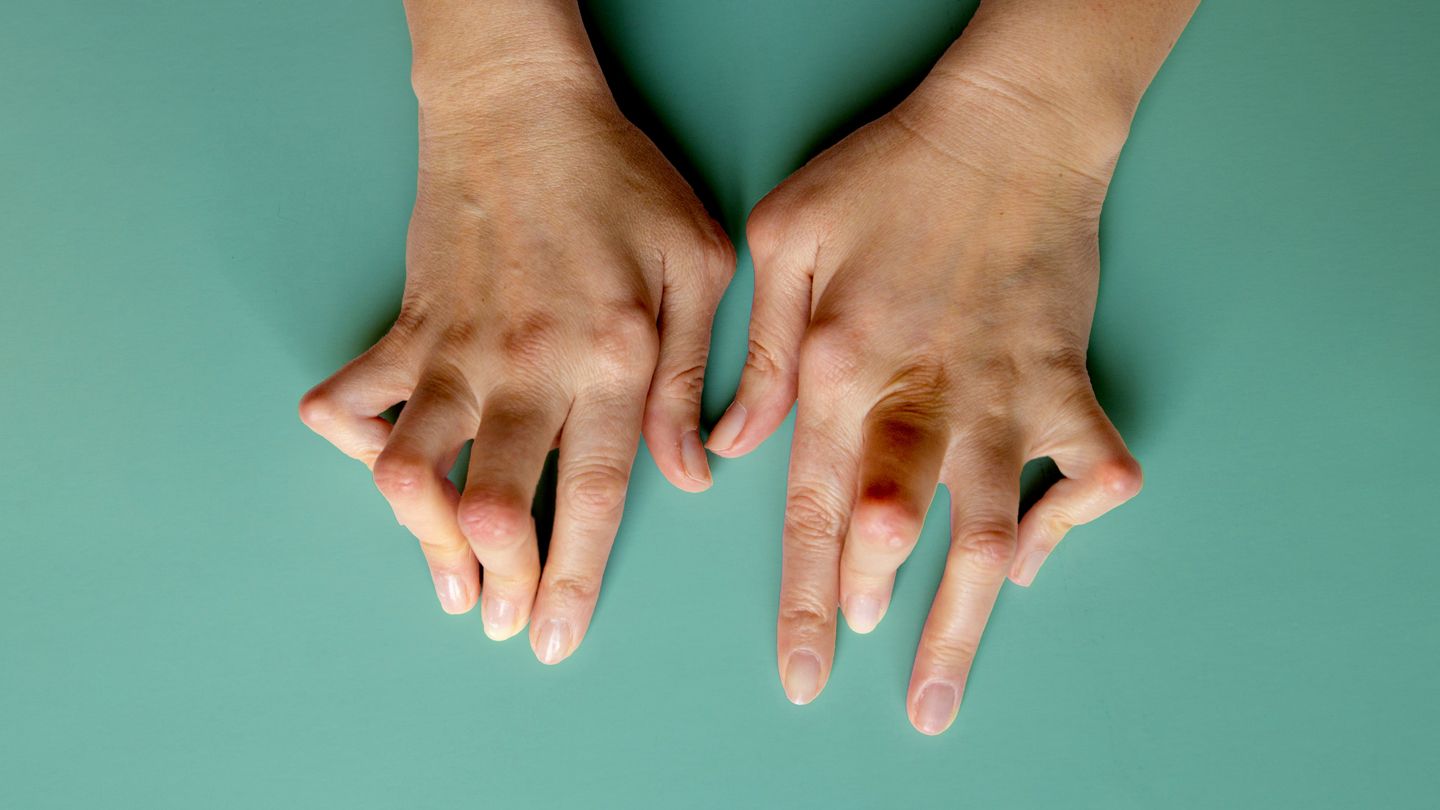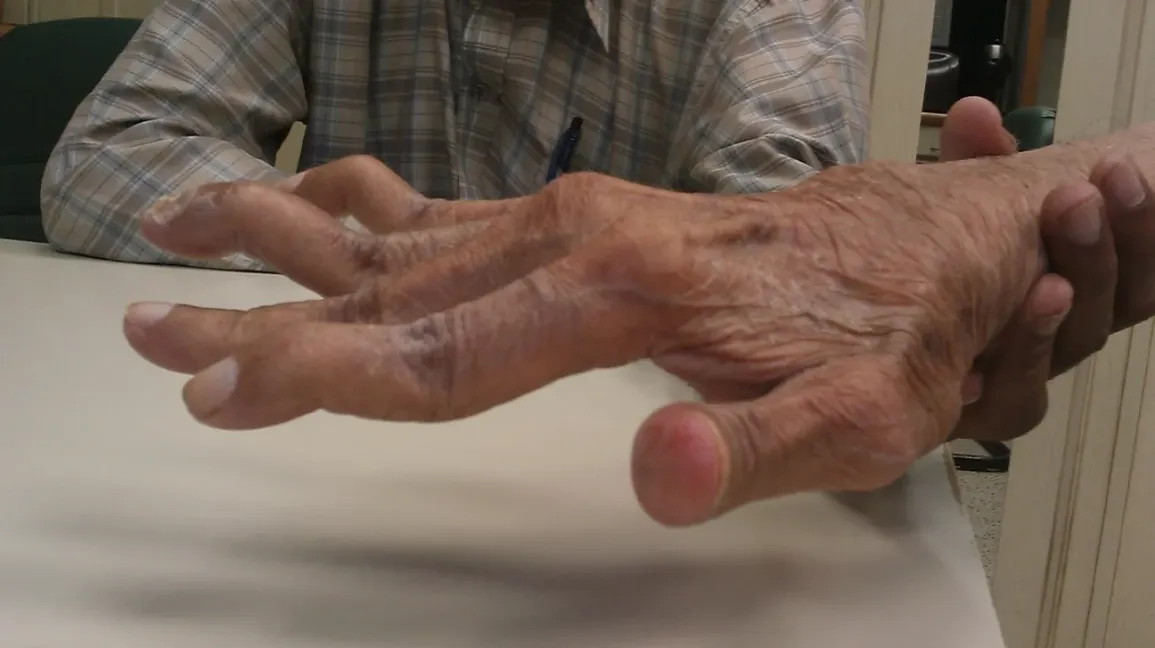Rheumatoid arthritis is a systemic disease of connective tissue with predominant damage to small joints.
Rheumatoid arthritis can start in any joint, but most often begins in the small joints of the fingers, hands, and wrists. Joint damage is usually symmetrical, meaning if a joint on the right hand hurts, the same joint on the left is most likely to hurt.
Symptoms to look out for
- Fatigue;
- Morning stiffness;
- Weakness;
- Flu-like symptoms;
- Pain when sitting for a long time;
- Outbreaks of disease activity accompanied by remission;
- Muscle pain;
- Loss of appetite, depression, weight loss, anemia, cold and/or sweaty palms and feet;
- A disorder of the glands around the eyes and mouth that causes insufficient production of tears and saliva.

There are 3 main factors that are identified as the cause of the disease (rheumatological triad)
- Genetic predisposition
- Hereditary predisposition to autoimmune reactions
- More common in carriers of a certain MHC class II antigen: HLA – DR1, DR4
- Infectious factor
- paramyxoviruses – viruses of mumps, measles, respiratory syncytial infection
- hepatoviruses – hepatitis B virus
- herpesviruses – herpes simplex viruses, herpes zoster, cytomegalovirus, Epstein-Barr virus
- retroviruses – T-lymphotropic virus
- Trigger factor (hypothermia, hyperinsolation, intoxication, mutagenic drugs, endocrinopathies, stress, etc.) . For women, the duration of breastfeeding reduces the likelihood of developing RA. Breastfeeding for 24 months or longer reduces the risk of developing RA by half.
Diagnosis of the disease
It is based on a biochemical blood test , changes in the joints visible on an X-ray , and the use of basic clinical markers . Blood tests examine ESR, rheumatoid factor, platelet count, etc. The most advanced test is the titer of antibodies to cyclic citrulline-containing peptide – anti-CCP, anti -CCP . The specificity of this indicator is about 90%, while it is present in 79% of sera from patients with RA.
Diagnostically important clinical features include the absence of changes in skin color over inflamed joints, the development of tendosynovitis of the flexors or extensors of the fingers of the hands, and the formation of amyotrophy, typical deformations of the hands, the so-called “rheumatoid hand”.
The criteria for an unfavorable prognosis are:
- early damage to large joints and the appearance of rheumatoid nodules;
- enlarged lymph nodes;
- involvement of new joints during subsequent exacerbation;
- systemic nature of the disease;
- persistent increase in ESR;
- early onset (within the first year) and high titers of rheumatoid factor;
- early (up to four months) radiological changes in the affected joints – rapid progression of destructive changes;
- detection of antinuclear antibodies and LE cells;
- carriage of HLA-DR4 antigens; poor tolerance of basic drugs.
In the treatment of rheumatoid arthritis, systemic drug therapy with various groups of drugs is used.






